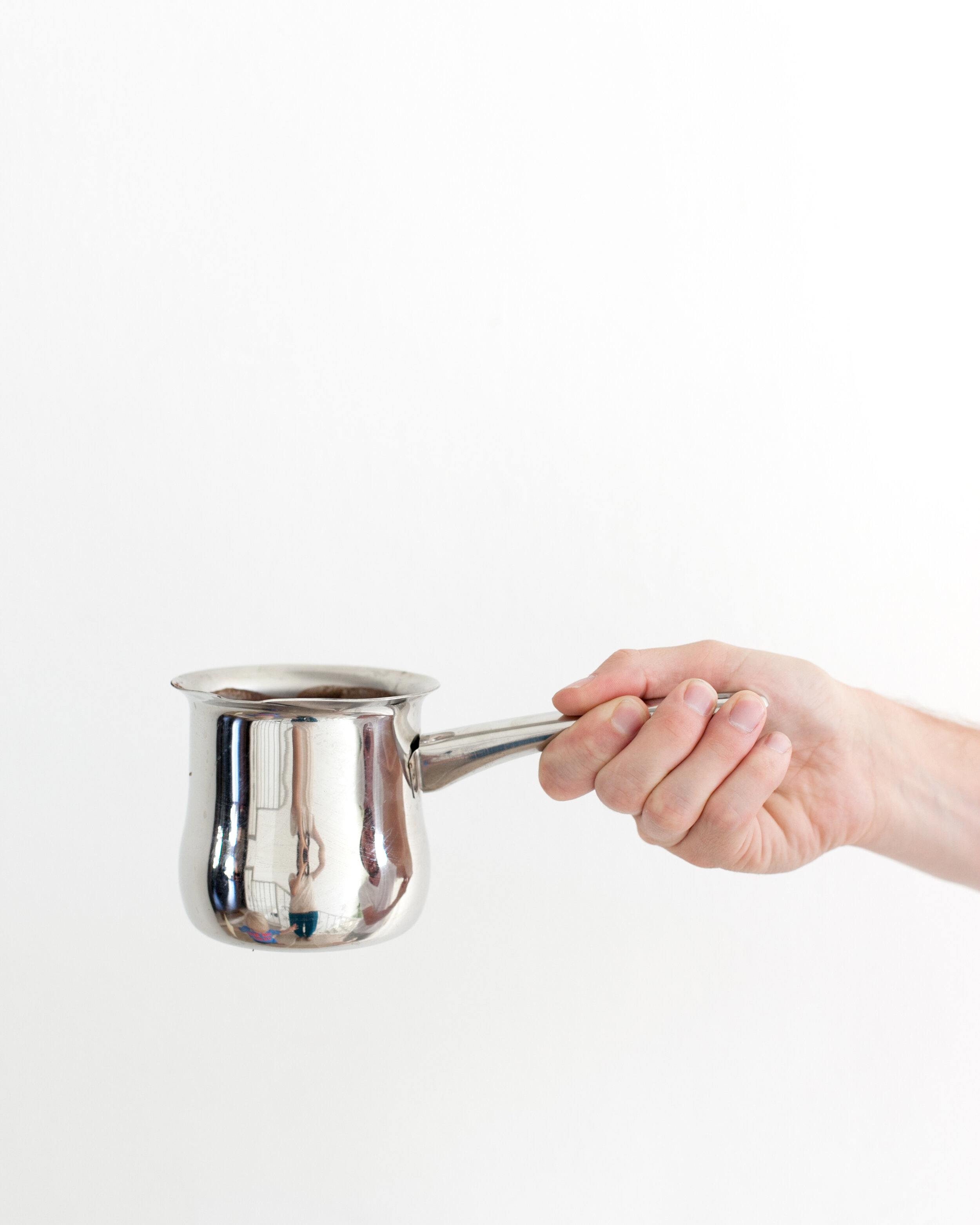Turkish Coffee, our New Cup of Joe
I've been a coffee drinker for as long as I can remember. When I was a little girl, my dad would make my sisters and me our very own demitasse cups of coffee milk - half coffee/half warm milk. Its a fond memory I hold dear and one I think led me to my working at a speciality coffee shop while in college. And I can remember sitting in my favorite cafe while studying abroad in Italy, watching all the men stand at the counter drinking their espresso while I sat with my cappuccino keeping my company. And when visiting Greece watching the locals sipping their coffee and passing hours of time with friends. Perhaps that's the thing that coffee is for many of us. It is so engrained in our tradition that we don't think twice about enjoying it on a daily basis.
The way to enjoy coffee depends on where you are from. Our favorites in our home are traditional cappuccinos or americanos (we gifted each other this espresso machine for Christmas last year). Since moving to Jordan, we've found a few local shops that serve those options but they are not common here. The traditional method found in Jordan and throughout most of the Middle East is turkish coffee. I've since learned that its actually one of the earliest methods for brewing coffee. The portion size is similar to that of a shot of an espresso, maybe a little more. It consists of freshly ground beans (which is apparently very important for the process), sugar, water, and spices like cardamom or cinnamon. Almost every grocery store in town has a turkish coffee stand where you can watch them mix the beans and spices grinding to the perfect consistency. We decided to purchase a cezve (turkish coffee pot) and try our hand at making it. Surprisingly it's not too complicated. And while I miss our own tradition of making coffee, its nice to take part in the tradition known to this city, and its happily satisfying our tastes in between visits to a local cafe for a cappuccino.
What You'll Need to Make Turkish Coffee: Cezve/Ibrik Freshly ground beans (commercial grade grinders have an option for turkish coffee) Sugar to taste Fresh, cold water Cardamom and/or cinnamon to taste
Instructions: *Note: A cup in these instructions is the size of a demitasse (~3oz) not a regular cup. Add water to cezve (depending on the amount of coffee you are making, ~3 oz for every cup) Add 1 heaping teaspoon per cup of coffee, sugar to taste, and spices to taste (to taste will be different for everyone, I recommend starting with ~1tsp of and figuring out the perfect mix for yourself over time)
Put cezve on low heat burner. Allow grind mixture to slowly sink into the water then stir the mixture well. As coffee continues heating you will see it start to rise. Once it rises remove from heat just before it spills over the top. Allow it to settle, and then return to burner and repeat the process one more time. Remove from heat and pour into cups. Wait a minute to allow grinds to settle, and then enjoy. There will be grinds settled at the bottom of your cup so be sure not to drink those.
If you prefer your coffee to not be so strong, you can add a little milk to it. This is steering away from the traditional method of making turkish coffee but enjoy it how you like. And if you want detailed instructions with photos of each step of the process, this was a great resource we used when first learning.



